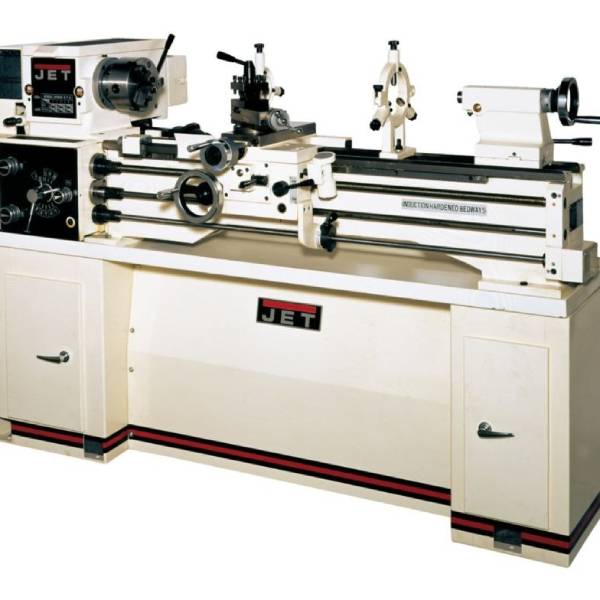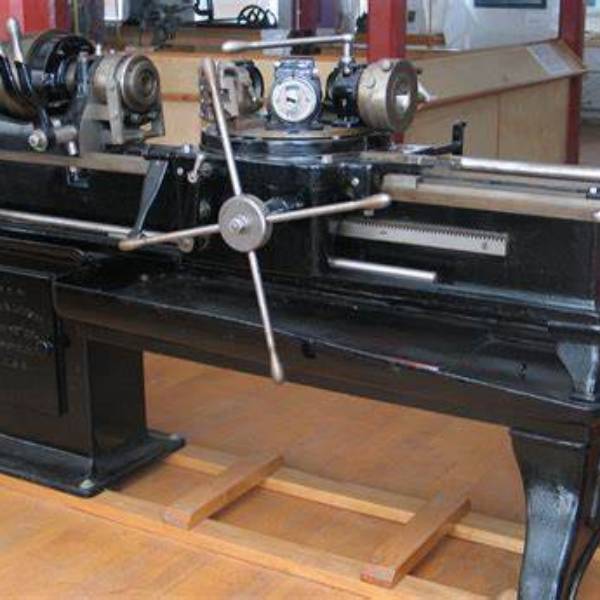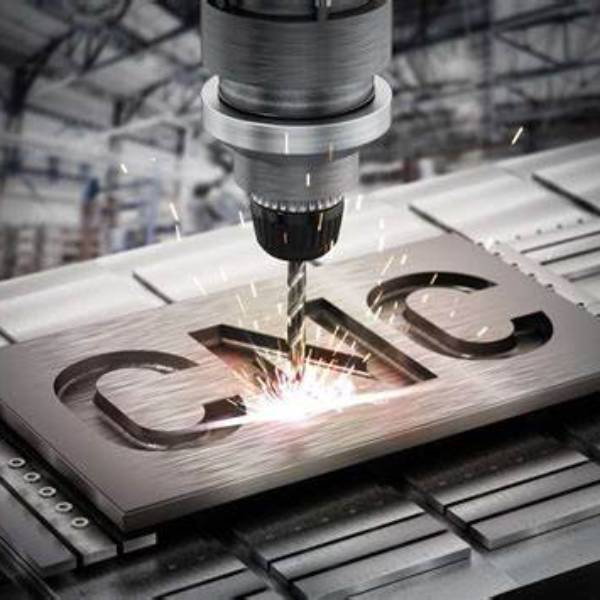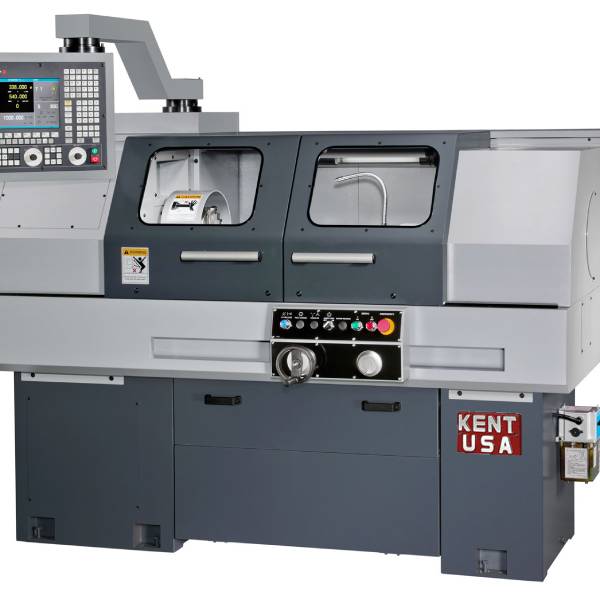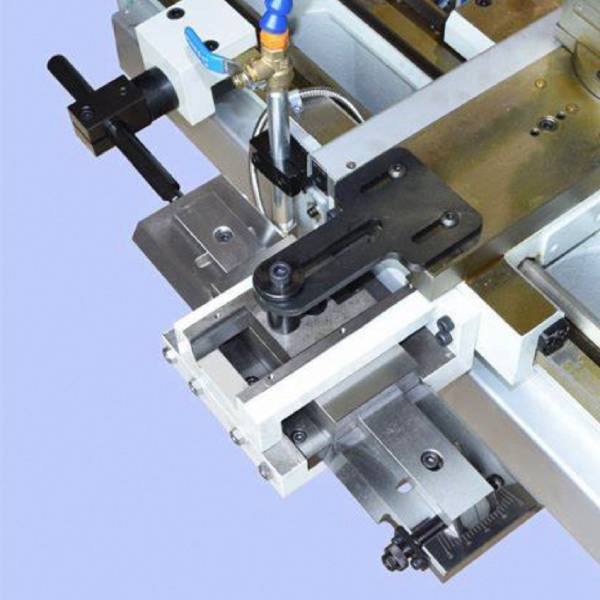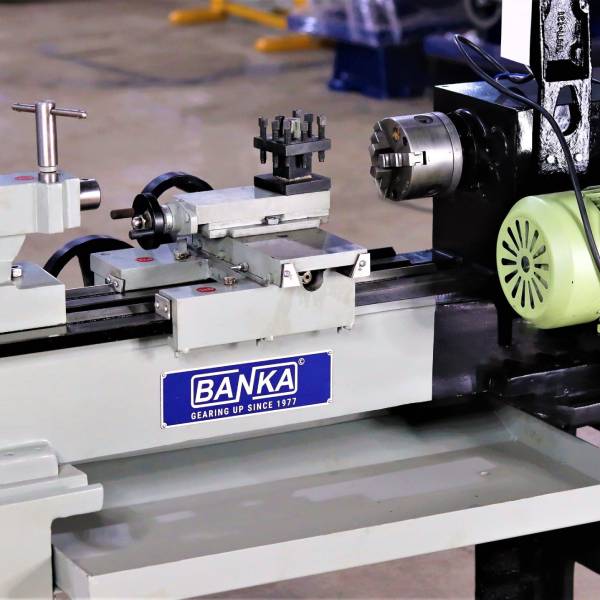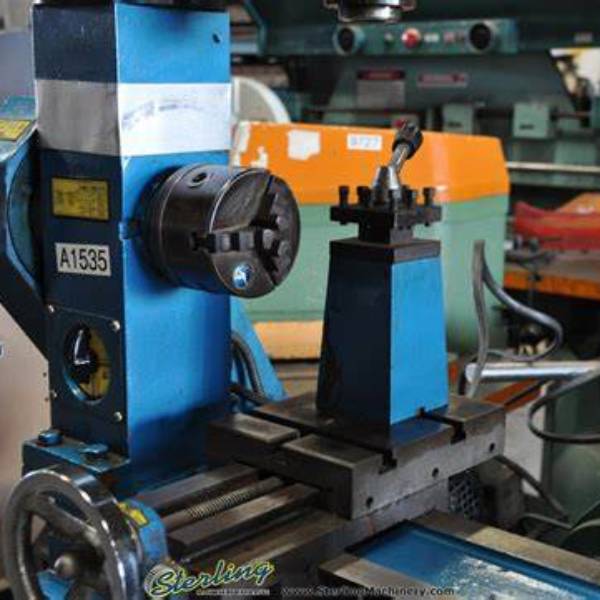Mastering Lathe Operations for Beginners
Introduction to Lathe Machines
Learning how to use a lathe starts with understanding what it is. A lathe machine is a tool that rotates a workpiece. It does this on an axis. As it rotates, you can cut, sand, drill, or deform the workpiece. Various tools apply these actions. These include facing off, turning or cutting threads. Lathes come in different sizes. From small tabletop lathes to large industrial machines. Most often, metal or wood are the materials worked on.
![]()
Knowing the parts is important. Each part of the lathe serves a specific purpose. The main parts include the headstock, tailstock, bed, carriage, and cross-slide. The headstock holds the workpiece. The tailstock supports the other end. The bed is the base that supports both. The carriage moves the cutting tool. The cross-slide lets the tool move in and out. A lathe is used for shaping and machining materials, with its key components like the headstock, tailstock, and carriage playing vital roles in ensuring precise operations, thereby helping craftsmen create intricate designs and smooth finishes.
Lathes have been around for centuries. But, they have evolved a lot. Today’s lathes offer precision and versatility. They can produce simple objects like candlesticks. They can also create complex parts used in machines and vehicles. For any beginner, knowing how to use a lathe opens many crafting possibilities. Whether you are passionate about DIY projects, or you aim for professional machining, a lathe proves to be a valuable asset.
Essential Safety Precautions When Using a Lathe
Safety is critical in any workshop, and when learning how to use a lathe, it becomes paramount. Here’s a guide to ensure you operate your lathe safely:
- Wear Safety Gear: Always put on appropriate safety equipment, such as safety glasses, ear protection, and a face shield.
- Secure Loose Clothing: Make sure to tie back long hair, roll up sleeves, and tuck in any loose clothing to prevent entanglement with the lathe.
- Check the Lathe Before Use: Perform a quick inspection of the lathe to ensure everything is in proper working order. Look for any loose parts or malfunctioning components.
- Know Your Emergency Stops: Familiarize yourself with the lathe’s emergency stop functions and other safety features. Practice reaching them quickly.
- Use Correct Settings: Avoid setting the lathe’s speed too high for the material you’re working on. Consult the manufacturer’s guidelines.
- Keep Your Workspace Clean: Ensure the area around the lathe is clean and free from clutter that could cause trips or falls.
- Avoid Distractions: Never use a lathe if you’re not fully focused, or if you are under the influence of drugs or alcohol.
- Get Proper Training: Make sure you understand how to use a lathe safely. Seek guidance from trained professionals if you are uncertain.
Remember, taking these precautions not only protects you but also maintains the integrity and longevity of your lathe machine. Safety should always be your first priority while working in any capacity with machinery.
Setting Up Your Lathe
Setting up your lathe correctly is critical for precise machining. Begin by placing the lathe on a firm and level surface. This ensures stability during operations. Ensure you have easy access to power sources and emergency stops. Your workspace should have good lighting. This helps in avoiding errors and accidents. To achieve optimal performance with your jet metal lathe, make sure it is positioned on a stable, level surface with adequate lighting and easy access to power sources and emergency stops.
![]()
Next, clean the lathe thoroughly. Remove any dust, debris, or oils using a soft cloth. Lubricate moving parts as indicated in the user manual. This step is crucial for smooth operation and preventing wear and tear.
Now, install the chuck or faceplate onto the headstock spindle. Tighten it securely using the provided wrench. The workpiece will attach here. Check alignment for both the headstock and tailstock. They must be precise to avoid errors during machining.
Adjust the tool rest to the proper height. It should be close to the workpiece, but not touch it. This rest supports your tools while you work.
Before you begin your project, do a trial run. Turn the lathe on without a workpiece. Listen for any unusual noises. Check for smooth operation. Confirm the rotation speed matches the task at hand. Adjust speeds according to the material you’ll be working on.
Finally, recheck all settings before starting your project. Proper setup helps you learn how to use a lathe effectively. It minimizes risks and improves the quality of your work. Always refer to the user manual for specific instructions related to your lathe model.
Understanding Lathe Components and Their Functions
To excel in using a lathe, you must know its components and their functions. Here’s an easy-to-understand breakdown:
- Headstock: This is the lathe’s powerhouse. It holds and rotates the spindle.
- Tailstock: It supports the other end of your workpiece. You can adjust it to fit various lengths.
- Bed: Think of the bed as the lathe’s backbone. It supports the headstock, tailstock, and carriage.
- Carriage: This component moves the cutting tool along the length of the workpiece.
- Cross-slide: Attached to the carriage, it allows the tool to move in and out.
- Tool Post: It secures the cutting tool in place and lets you adjust its angle.
- Chuck: A clamp that goes on the spindle of the headstock. It holds your workpiece securely.
Each part works in harmony to shape the material you are working with. For instance, as the headstock spins the workpiece, the carriage and cross-slide move the tool to cut it precisely. The tailstock ensures the piece does not wobble as it turns.
By understanding these components and their roles, you can better grasp how to use a lathe. This knowledge also helps when troubleshooting or explaining operations to others. Always refer back to your user manual for specific details about your machine’s parts. Understanding how various components work is essential when learning what’s a lathe, as it enhances your ability to operate the machine effectively and assist others. When facing challenges or explaining its functions, always remember to consult the user manual for detailed information specific to your lathe model.
![]()
Basic Lathe Operations
When starting to learn how to use a lathe, mastering basic operations is essential. These operations transform a raw material into a finished product. Here are key procedures you should understand:
- Facing: This is the process of creating a flat surface on the end of the workpiece. Secure the workpiece, set your tool to a 90-degree angle, and move it across the end.
- Turning: This involves reducing the diameter of the workpiece. You do this by moving a cutting tool along the outside of the rotating material.
- Parting off: Use a parting tool to cut a piece off the workpiece. Move the tool slowly into the material until it separates.
- Drilling: For this, you use a drill bit in the tailstock. Advance the bit into the rotating workpiece to make a hole.
- Knurling: This operation adds a patterned texture to the surface for grip. By pressing a knurling tool against the workpiece, the pattern is formed.
- Threading: Cutting threads is intricate. It requires consistent tool movement along the workpiece. Threads can be internal or external.
Each operation needs practice to perfect. Start with simple tasks. As you gain confidence, you can tackle more complex projects. Remember to always follow the safety precautions laid out earlier. Precision and patience are your allies in achieving quality results.
Lathe Cutting Tools and Usage Tips
To progress in the art of lathe work, understanding different cutting tools and their usage is vital. Let’s explore the common types and some usage tips:
- High-Speed Steel (HSS) Tools: These are popular for their durability and versatility. They can cut many materials. Sharpen these tools regularly for best results.
- Carbide-Tipped Tools: Carbide tools maintain their edge longer than HSS. They work great for harder materials. They’re more brittle, so handle with care.
- Insert Tools: These have a replaceable cutting tip. When the edge wears out, just change the tip. This saves time as you don’t need frequent sharpening.
- Parting Tools: Use these tools to cut or part off finished sections from the workpiece.
- Boring Tools: For enlarging holes or cutting internal diameters, use boring tools. They fit into the tailstock or tool post.
Now for some tips on using these tools effectively:
- Select the Right Tool: Determine what cutting tool fits your project. Consider the material and the type of cut.
- Use Correct Tooling Angles: Angle your tools properly. This affects the finish and the cutting efficiency. Learn the basic angles for different cuts.
- Maintain Tools: Keep your cutting tools sharp and clean. Dull or dirty tools can ruin your workpiece.
- Test Your Setup: Always do a trial cut on scrap material. This helps you adjust tool settings without risking your actual workpiece.
- Control Feed and Speed: Feeding the tool too fast or slow can affect the cut. Adjust the lathe’s speed according to the material and the cutting tool.
Remember, each operation with a lathe depends largely on the cutting tool used. By mastering their use, you will advance your lathe skills and produce more precise work.
Common Projects and Techniques for Lathe Beginners
For those starting to learn how to use a lathe, there are a range of projects that are ideal for honing your skills. These tasks are not only manageable for those new to turning but also provide a solid foundation for more complex work in the future. Here are a few suggestions:
- Pens: Pen turning is a popular project for beginners. It teaches how to handle small, delicate pieces. You’ll learn about turning between centers, which is a vital skill.
- Bottle Stoppers: These are fun and useful. They require both faceplate work and turning. It’s a great way to practice shaping techniques.
- Bowls: Making bowls introduces you to hollow turning. You can start with simple shapes before moving on to more intricate designs.
- Tool Handles: Crafting handles for tools, like a chisel or screwdriver, helps you get the feel of turning longer items. It’s also practical, as you can use your creations.
- Candlesticks: These can be as simple or as elaborate as you wish. They are good for practicing both spindle and faceplate turning.
When working on these projects, keep these techniques in mind:
- Start Slow: Don’t rush your work. Begin with low speed and increase gradually as you gain confidence.
- Measure Twice, Cut Once: Always double-check your measurements. Precision is key to a successful project.
- Practice Tool Control: Your hands guide the tools, so practice holding and maneuvering them until it feels natural.
- Progress Gradually: Start with softer materials and simpler shapes. As you build your skills, you can attempt more challenging tasks.
Remember to refer back to the safety guidelines outlined earlier and keep practicing. With each project, you’ll grow more adept at using your lathe and creating impressive pieces.
Maintenance and Troubleshooting for Your Lathe
Maintaining your lathe is crucial to its operation and longevity. Regular maintenance can prevent most issues that arise. Here’s how you can keep your lathe in top shape:
- Clean Regularly: After each use, clean your lathe. Remove all the metal shavings and sawdust. Wipe down the machine with a soft cloth.
- Lubricate the Parts: Ensure all moving parts are well-lubricated. Follow your lathe’s manual for guidance on lubrication points and recommended oils.
- Inspect for Wear: Check for worn or damaged parts. Look for signs like unusual noises or movement. Replace any parts as necessary.
- Tighten Any Loose Fittings: Bolts and screws can loosen over time. Tighten them up to avoid any wobbling or misalignment.
- Check Alignment: Regularly check the alignment of the headstock and tailstock. Misalignment can cause inaccuracies in your work.
When troubleshooting problems with your lathe, here are some common issues and how to fix them:
- Unusual Noise: Listen for grinding or knocking sounds. They can signal a loose part or a lack of lubrication.
- Vibration during Operation: Check the alignment and tighten any loose components. Ensure the workpiece is properly secured.
- Difficulty Turning the Workpiece: Double-check your cutting tools for sharpness. Adjust your technique or tool placement.
- Inaccurate Cuts: This could be due to misalignment. Review your setup and adjust as necessary.
Regular maintenance can prevent most problems. But always keep your user manual handy. It often has troubleshooting tips specific to your model. Learning how to maintain and troubleshoot your lathe is part of learning how to use a lathe. It ensures that your projects are successful and that your machine lasts for years.
Resources and Further Learning for Lathe Enthusiasts
Becoming skilled at using a lathe is a journey that involves consistent practice and learning. Beyond hands-on experience, there are various resources you can tap into to enhance your knowledge and skills. Here are some valuable resources and avenues for further learning:
- Books and Manuals: Look for books that cover the basics and advanced techniques of lathe work. Manuals often include detailed guidance specific to your lathe model.
- Online Forums and Communities: Join online platforms where lathe enthusiasts gather. Here, you can ask questions, share experiences, and get advice from seasoned practitioners.
- Video Tutorials: Platforms like YouTube have countless tutorials that demonstrate different lathe operations. Visual learning can be quite effective.
- Workshops and Courses: Many community colleges and trade schools offer courses on lathe operation and machining. Formal education can be very beneficial.
- DIY Projects: Practice by working on diverse projects. Each new project can teach you a different aspect of lathe use.
- Mentorship: If possible, find a mentor who is an experienced lathe user. They can provide hands-on guidance and insights gained from years of experience.
- Trade Shows and Exhibitions: Attend industry events to see the latest in lathe technology and meet professionals in the field.
Each resource presents a unique opportunity for learning. Dedicate time to explore these options and find what works best for you. With consistent effort and a zeal for learning, mastering how to use a lathe is an achievable goal. Keep your safety gear on, follow the guidelines, and keep turning those projects into masterpieces!

